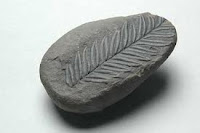


Amber is fossilized tree resin (not sap), which has been appreciated for its color and natural beauty since Neolithic times. Amber is used as an ingredient in perfumes, as a healing agent in folk medicine, and as jewelry. Because it originates as a soft, sticky tree resin, amber sometimes contains animal and plant material as inclusions. Amber occurring in coal seams is also called resinite, and the term ambrite is applied to that found specifically within New Zealand coal seams. Amber is globally distributed, mainly in rocks of Cretaceous age or younger. Historically, the coast around Konigsberg in Prussia was the world's leading source of amber. About 90% of the world's extractable amber is still located in the Kaliningrad Oblast of Russia on the Baltic Sea. Pieces of amber torn from the seafloor are cast up by the waves, and collected by hand, dredging, or diving. Elsewhere, amber is mined, both in open works and underground galleries. Amber occurs in a range of different colors. As well as the usual yellow-orange-brown, amber itself can range from a whitish color through a pale lemon yellow, to brown and almost black. Other more uncommon colors include red amber, sometimes known as "cherry amber", green amber, and even blue amber, which is rare and highly sought after. Much of the most highly-prized amber is transparent, in contrast to the very common cloudy amber and opaque amber. Opaque amber contains numerous minute bubbles. This kind of amber is known as "bony amber". Although all Dominican amber is fluorescent, the rarest Dominican amber is blue amber. It turns blue in natural sunlight and any other partially or wholly ultraviolet light source. In long-wave UV light it has a very strong reflection, almost white. Only about 100 kg is found per year, which makes it valuable and expensive. Sometimes amber retains the form of drops and stalactites. It is thought that, in addition to exuding onto the surface of the tree, amber resin also originally flowed into hollow cavities or cracks within trees, thereby leading to the development of large lumps of amber of irregular form.







































